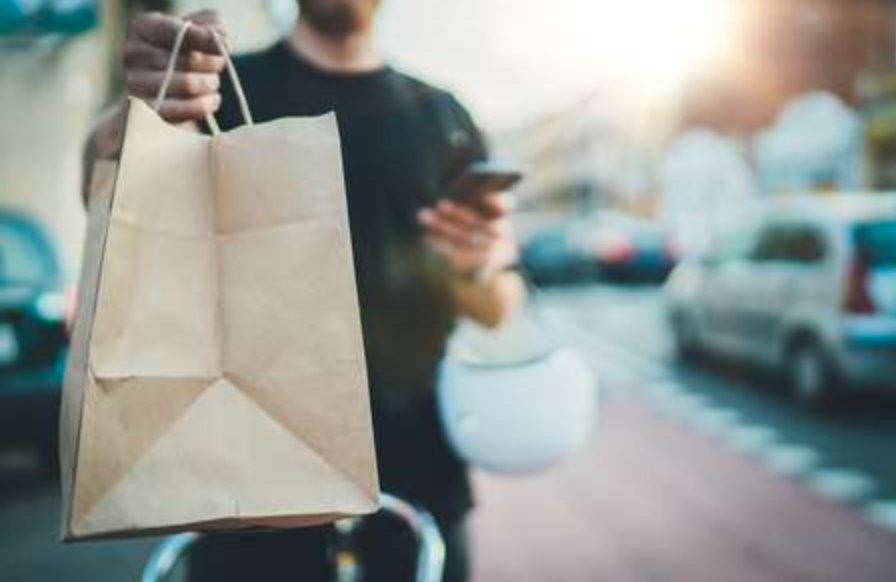With COVID-19 holding the service industry hostage for the foreseeable future, restaurants are being forced to adapt to unprecedented times. The good news? There’s an inspiring number of people that are interested in supporting local businesses while we all wait for a return to normalcy. These same people need to eat—so how do we get our food into their homes? This is your crash course in launching your self-delivery business.
Let’s Start With the Benefits
The first, and most obvious benefit is not having to pay the hefty fee charged by 3rd party delivery services (UberEats, Grubhub, Doordash, etc). These companies have effectively started the food delivery revolution, leading to 44% of restaurant sales being off-premise. The only problem? They cut into your bottom line.
Using the front of house employees to handle deliveries not only keeps the money in the family, it puts your employees back to work. And right now, retaining as much staff as possible is important.
Decide on Your Model
Before you start running dishes all over town, you should set your “delivery territory” to calculate what you’ll be charging per delivery. Start by figuring out where the densest populations are near your restaurant, and how many miles you’ll likely average per order. Then you’ll decide how you’ll break down your delivery fee—which can be a flat percentage (say, 10-12% of the order price), or charge based on the mile (say, $1.50 per mile). There’s no perfect model, so we encourage you to figure out what brings the most value into your business.
The Ordering Part
Having someone dedicated to the phones is a great way to start, but an online system can help take the pressure off fielding orders and keeping them organized. Check your POS system to see if they have simple solutions, or consider taking Toast Now for a free 3-month spin.
(If you live in Austin, ordertext.com is waiving the registration fees for their delivery ordering technology.)
Batch Your Deliveries
You wouldn’t send a single driver off with a single order, so take that logic to the next level by batching orders that are in the same general direction (or within 15-20 minutes from each other). Apps like Waze can help you plot multiple destinations on a route to create the most efficient route possible. And if your delivery business starts to really take off, consider having a person with knowledge of your area dedicated to batching orders together. 30 or more delivery orders a day is the baseline for this role, according to Olo.
Keep it Contactless
Considering the current COVID-19 pandemic, you’ll want to set the expectation with your customer that their meal will simply be dropped off at their door (to avoid human contact). You can help yourself and your drivers out by ensuring that tips are charged up front.
Simplify Your Menu
Think about the items on your menu that are most popular, or even what travels best. You’ll want to make sure you set yourself up to be successful, and trimming the items that cost money to take up space in your storage is an easy way to put yourself in a better position. And for a sneaky tip—try bundling your entrees into some sort of “family style” package to sweeten the pot for your customers.
Check Your Cocktail Delivery Regulations
Because if your city is allowing you to deliver, you might want to (heavily) consider adding a (super simple) cocktail program to your menu. It’s a great way to create a novelty experience while adding dollars to each order.
Get Your Packaging Right
A lot can happen from the time your items leave the restaurant to when they arrive in a customer’s home, so protecting the food has to be a priority. Consider packaging that’s sturdy, flat, and includes some ventilation. Clear packaging will help drivers confirm the accuracy of the order before taking off (as opposed to assuming we’re all perfect, which we’re not). Place liquids and sauces into separate containers to avoid sogginess and spillage. And if you’re finding your delivery routes are getting longer and longer, hot bags can help keep your meals at the ideal temperature.
Lastly, Let Your Community Know
It costs nothing to blast your message out on social media, and there’s never been a better time for users to scroll through the entirety of their feed (which means better likelihood that your offering will be seen). Create deals that incentivize repeat customers (“free desert if you order today”), load your posts up with relevant hashtags, shout it from the rooftops—you’re not only still open, you’re ready to bring the deliciousness straight to our doors.


